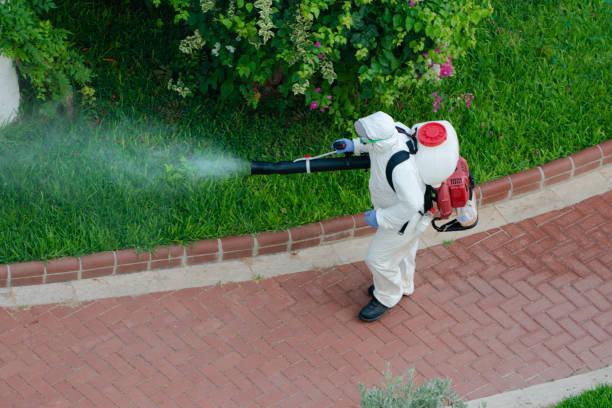
In the quest for a pest-free home, families often find themselves caught in a dilemma between effective pest control solutions and the safety of their loved ones. At Pest Blaster, we understand the importance of maintaining a safe and healthy environment for your family. That’s why we specialise in providing non-toxic pest control solutions that are effective against unwanted guests without putting your loved ones or the planet at risk. Our methods are designed to give you peace of mind, knowing that your home is protected by eco-friendly solutions.
In today’s world, the safety of our environment and the health of our families has become paramount. With increasing awareness about the harmful effects of traditional pest control chemicals, more homeowners are seeking non-toxic alternatives. These eco-friendly solutions, a hallmark of Pest Blaster’s services, not only eliminate pests but also keep your home safe for children, pets, and plants.
Non-toxic pest control methods offer a myriad of benefits over their chemical counterparts. They reduce the risk of adverse health reactions, protect the ecosystem, and can be equally effective if implemented correctly.
Eco-friendly pest control hinges on the principle of harm reduction – to pests, humans, and the environment. It emphasises the use of substances and strategies that are inherently less risky, yet capable of achieving desired outcomes. Here’s how you can make these principles work in your home:
Gardening can be more than just an aesthetic or culinary endeavour. Certain plants naturally repel pests. For example, lavender and marigolds repel mosquitoes and aphids, respectively, making them excellent choices for planting around the perimeter of your home or in windowsills.
For rodents and larger pests, humane traps offer a non-lethal solution. These traps capture pests without harming them, allowing for their relocation to areas where they won’t pose a problem to homeowners.
Implementing these solutions requires a strategy that aligns with your home’s specific needs and the types of pests you’re dealing with. Consider the following steps:
The advantages of adopting non-toxic pest control methods, as highlighted in our blog, extend beyond just safety. These approaches often lead to more sustainable, long-term solutions to pest problems. They can encourage biodiversity by preserving beneficial insects and wildlife, which in turn can help control pest populations naturally.
Moreover, many of these methods are cost-effective, reducing the need for expensive chemical treatments and professional interventions. They also foster a healthier living environment, free from the residues and odours associated with conventional pesticides.
Every home and situation is unique, which means there isn’t a one-size-fits-all solution to pest control. It may be necessary to combine several methods to achieve the best results. For instance, while essential oils may repel certain pests, others might require physical barriers or traps to manage effectively.
Knowledge is a powerful tool in integrated pest management. Educating yourself and your family about the pests you’re dealing with, the signs of their presence, and how to use non-toxic methods effectively can make a significant difference in your success rate. It also fosters a sense of responsibility towards the environment and well-being of your household.
Pest control is an evolving field, with new methods and products being developed regularly. Staying informed about the latest in non-toxic pest control can help you adapt your strategies over time, ensuring they remain effective and safe.
Struggling with pests but worried about the safety of conventional methods? Pest Blaster is here to help. Our eco-friendly solutions promise peace of mind and a pest-free home. Contact us today to learn more about our services. Embracing these solutions not only contributes to a healthier living environment but also supports a more sustainable and harmonious relationship with the natural world. Remember, successful pest management is about balance, and with the right strategies, you can achieve a pest-free home without compromising on safety or environmental integrity.
The safest methods include using diatomaceous earth, essential oils, and encouraging natural predators. Always ensure products are used as directed and kept out of reach of children and pets.
Yes, when applied correctly and consistently, non-toxic methods can be just as effective as their chemical counterparts, especially with professional guidance.
Frequency depends on the method and the extent of the pest issue. Some natural deterrents may need more frequent application, while professional solutions can offer longer-lasting protection.
Yes, ultrasonic repellers and humane traps are non-toxic options for managing rodents, alongside sealing entry points to prevent access.
Regular cleaning, proper food storage, reducing moisture, and decluttering can significantly reduce the appeal of your home to pests.
Pest Blaster services are one of the prominent pest control services that offer the best to the clients. We have a long chain of clients who are happier with our work.


Copyright © 2025 Pest Blaster. All Rights Reserved.